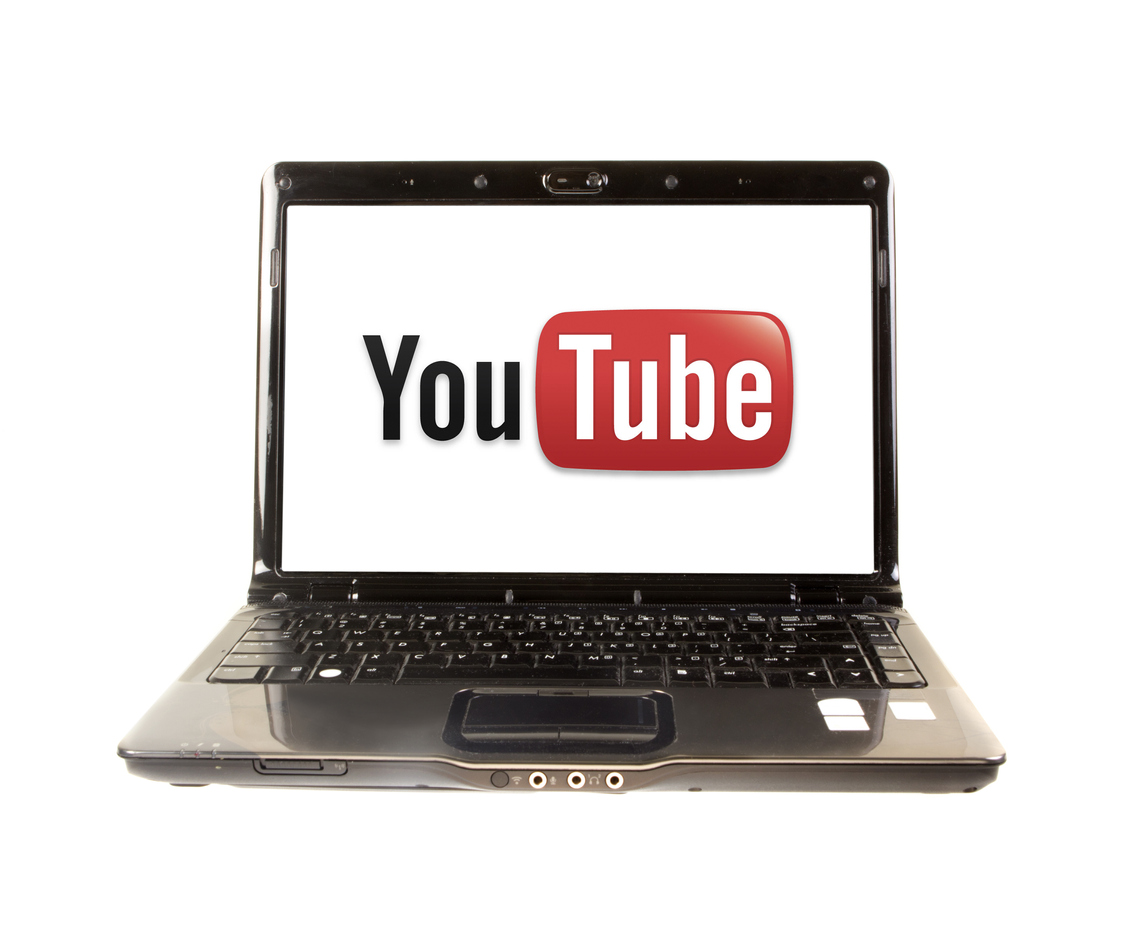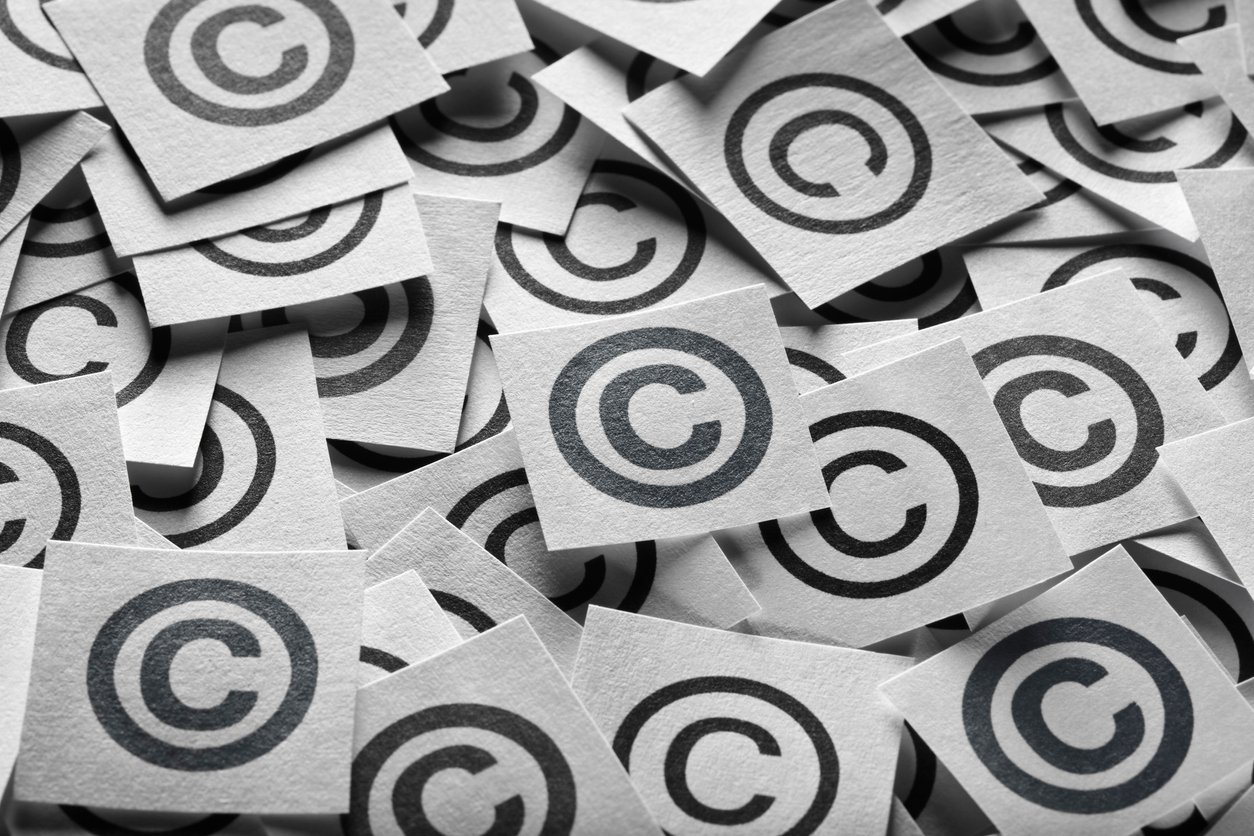
YouTube offers lots of opportunity for content creators through the process of uploading and monetizing video. It provides a valuable way for you to build and reinforce your brand, and even become an influencer. Plus, ads aren't the only way you can make money on YouTube. You can set up multiple income streams, increase sales of your own products, and much more.
The process of creating your videos and building your audience can be really exciting. However, you need to put a lot of effort into starting and continuing your channel. YouTube has strict standards that determine the features you'll have access to and whether or not you can monetize your videos with ads. This article will explain how to meet YouTube's guidelines, and grow and maintain your channel.
Table of Contents
Building Your Audience and Monetizing Your Channel
In order to start making money on YouTube, you need an audience. In fact, YouTube requires you to have an existing audience before they allow you to join the YouTube Partner Program, which allows you to place paid ads on your videos. You will need to have at least 1,000 subscribers and 4,000 view hours across the previous 12 months to qualify, and you need to maintain these levels to remain in the program. Your content will also need to conform to YouTube’s Terms of Service and partner policies, which we’ll cover now so you can understand them while you plan your content.
YouTube Partner Eligibility
In order to be eligible for advertising, you must:
- Live in a country eligible for the YouTube Partner Program
- Use 2-Step Verification for your Google Account
- Meet YouTube’s copyright guidelines and have no active Community Guidelines strikes on your account
- Follow all of YouTube’s monetization policies
- Contain no overly adult themes or dangerous or harmful content in your videos
- Keep foul language at an absolute minimum (or preferably nonexistent)
- Have 1,000 subscribers and 4,000 valid public watch hours as mentioned above
- Not include your own embedded ads
- Have a connected AdSense account
- Sign the YouTube Partner Program terms and get reviewed for entry into the program
The above list is just a summary — please refer to the official YouTube Partner Program overview & eligibility article for more details.
As for content, you can check out a detailed list of YouTube’s advertiser-friendly content guidelines here. You can still create videos that push the envelope a bit on your channel, but you’ll need to demonetize them. If you leave monetization active on a video that breaks the advertiser-friendly guidelines, your whole YouTube Partner membership could be revoked, so it’s best to play it safe. Even demonetized videos must follow YouTube’s overall content policies.
You should also fully disclose your relationship to any products you review or promote. Popular YouTubers have run into trouble in the past by leaving out this type of information. While such a lack of disclosure doesn’t automatically break YouTube’s rules against scams, this can alienate your audience and cause a loss of subscribers and views.
Planning Your Content

As long as you stay within the community and advertising rules, YouTube allows for massive creativity. Successful YouTubers cover everything from cooking to makeup tutorials to product reviews to video games. Instructional videos are also very popular.
While planning your content, be aware that there are different ways you can earn money through YouTube besides advertising as a Partner. If you run an online store, you can use YouTube to build up a brand culture around your products that will help you direct new customers to purchase from you. If your videos are entertaining enough to start pulling in lots of viewers, you can become an influencer that larger brands may want to sponsor — and you can sell as an affiliate of a brand, as well. You may even discover opportunities to license your videos to the media, for a fee.
Decide what your goals are and which method of earning you want to pursue first. You won’t be able to play ads on your videos until you’re accepted as a YouTube Partner, so you might want to begin with a different strategy that can still earn you money while you accumulate the view hours and subscribers you need.
During the planning process, come up with a schedule for working on your videos. Do you already have a full- or part-time job you’ll need to work around, or can you devote days at a time to building your YouTube channel? It’s important to figure this out early so you can produce videos often enough to consistently grow your audience. Your schedule will need to include:
- Time to plan and write a script for each video (even a loose script strongly improves quality)
- Time to prepare for shooting (if you need to go to a location, build a prop, etc.)
- Time to actually shoot each video (without rushing or trying to get it all in one take)
- Time to edit and process each video (cutting footage, splicing different shots, or even adding special effects)
- Time to work on optimizing your channel
- Time to interact with your audience
Evaluate your budget as well. Can you spend much money on video equipment and production software? Will you need to purchase products of any type, whether to make videos about a certain item or to use them in other ways? The more thoroughly you plan these steps, the better!
Avoiding Copyright Issues

Copyright refers to the exclusive right of an original creator to control how their material is used or published. YouTube has systems in place to protect the copyright of creators. This includes you, but as a new YouTube creator, your first concern should be to avoid infringing on the copyrights of others.
If YouTube identifies copyright infringement in one of your videos, they may mute part or all of the audio (e.g. to remove a copyrighted song), trim parts of the video, monetize it for the person who owns the copyright (and not for you!), or even remove it entirely. Your channel may receive a copyright strike which harms your standing as a YouTube creator.
The easiest way to avoid copyright infringement on YouTube is simply never to use any material that you did not create yourself. In certain circumstances, you can use others’ material on the basis of fair use. For example, showing footage from a video game for the purposes of a review or a “Let’s Play” is considered fair use. However, using a copyrighted song as an intro or background music would not be considered fair use, and could be acted upon as infringement. (Be extra careful with music! YouTube has muted the audio of entire videos because of a short snippet of a copyrighted song playing in the background, even if it wasn’t meant to be part of the video — such as a snippet of a popular song playing as a ringtone on a cell phone, or even on a radio in a car driving by outside.)
Please read YouTube’s Copyright and Fair Use Policies and make sure you follow them closely. This resource also describes how YouTube’s automated copyright detection tools work and how to make a claim yourself in case someone infringes on your own material.
Looking into the Future of Your Channel
Even if you’re just getting started on YouTube, it’s beneficial to plan for the future. Once you’re a YouTube Partner, you’ll get access to extra tools and privileges that help you promote your own brand.
For example, YouTube Creators can place cards on their videos that will link to other videos, but Partners can use these cards to link to outside websites. As a Partner, you could use cards to link to products on your online store, your affiliate link, a crowdfunding website, and more.
Another fun feature is the ability to use Super Chat during live video streams. With Super Chat, audience members can pay to have their messages highlighted in your chat box.
It also doesn’t hurt to enable monetization on your videos before you’re accepted into the YouTube Partner Program. This way, when you do get accepted, ads will be enabled immediately. Since you’re going to need an AdSense account, there’s no harm in creating and connecting it early on even before you’re otherwise eligible for the program. It’s one less step to do later.
Types of YouTube Ads and How to Use Them
Once you’re able to monetize your YouTube videos through ads, you’ll have control over the types and frequency of advertising shown on your videos. This will affect how you earn money and how much you earn, but will also have an effect on your viewers’ experience while they watch. This section of our guide will describe the different types of YouTube ads and how best to use them.
YouTube ads can vary in both type and placement. Type is the format of the ad, while placement refers to where the ad is placed in the video.
Ad Type: Overlay Ads
An overlay ad appears as a banner covering the bottom 20% of your video. These ads are less disruptive than other ad types, but their earning potential is limited because viewers must click the ad for you to receive payment. Overlay ads also only appear on computers, so views from other devices won’t present earning opportunities from them.
If you plan to use overlay ads, you should avoid putting important graphics in the bottom 20% of the video, but viewers can still close the ad at any time if it obscures something. Still, you don’t want to annoy them by covering an important part of your video with an ad.
Ad Type: Skippable Video Ads
Skippable video ads are one of the ad types most familiar to YouTube users. This type of ad is a video commercial that viewers can skip after 5 seconds. However, in order for you to earn money, a viewer must watch the whole ad or up to 30 seconds of it (whichever is shorter).
This type of ad works on every device and is the most commonly-used type of YouTube ad.
Ad Type: Non-Skippable Video Ads
These ads are video commercials that cannot be skipped by viewers, which means they have no choice but to watch them (and therefore, get you paid). However, these ads can be 15 or 20 seconds long and very impatient viewers may turn away from your channel, especially new viewers who aren’t yet familiar with your content. Basically, the effectiveness of non-skippable ads depends on how invested your viewers are in watching your video.
Non-skippable ads work on computers and mobile devices, but won’t be monetized on game consoles or televisions.
Ad Type: Display Ads
YouTube display ads appear next to your video, rather than over it. The benefit of this ad type is that it doesn’t disrupt viewing of your video. However, this is a lower-paying type of ad that also only appears on computers, so you won’t earn anything from mobile views with this type of ad. Advertisers choose whether or not the ad pays per view or if it must be clicked to earn.
Ad Type: Native Mobile Ads
This is a mobile-only ad format that appears below the video in the description. Like Display Ads, payment from this ad type depends on whether the advertiser has set it up as CPM (in which case you’ll get paid based on the load of the impression) or CPC (cost per click, in which case you’ll only get paid when viewers click the ad).
Ad Placement: Bumper Ads
Bumper ads are a short form of CPM ad no longer than 6 seconds. These are non-skippable and appear before your video starts. These ads are optimized for mobile viewing but also work on computers, and are not likely to turn viewers away because of their short length, despite being non-skippable.
Ad Placement: Mid-Roll Ads
Mid-roll ads are similar to TV commercials in that they’re placed at different points throughout a video. They’re only available for videos over 10 minutes long. You also have the ability to choose where the “commercial breaks” are inserted, so if you plan to use this type of advertising, you can film your videos with natural places for breaks.
Like non-skippable ads, mid-roll ads won’t be monetized on TVs or game consoles. Mid-roll ads can be skippable or non-skippable, with the skippable ones falling under the same requirements for how long the viewer watches the ad. Ads purchased on a CPM basis (cost per mille, which means per thousand) must be watched till the end for you to be paid, even if they’re skippable.
Choosing and Controlling Ads on Your Videos
When setting up your YouTube monetization, you have control over which of the above types of ads will be displayed. Use the ad types that work best with your content and target audience — for example, if your videos are strongly aimed at console video game players, make sure you use the ad types that work on consoles and TVs. You can still use other types, because your viewers are likely to watch from more than one device, but make sure you target the specific piece of equipment you know they can use to watch your videos: consoles!
You can also choose to prevent certain advertisers and categories from appearing with your videos. For example, you might want to exclude ads from companies that directly compete with you, or you may want to exclude a whole category like dating ads, political ads, or ads for consumer loans. YouTube has a whole list of “sensitive categories” you can choose to prevent from appearing.
What to Do if Ads Won’t Appear on Your Videos
YouTube combines your ad settings with user data in an algorithm meant to serve carefully-targeted ads at the right viewers. Occasionally, a correct ad won’t be found, resulting in no ads being shown for that instance. However, if you’re consistently not seeing ads, you may need to adjust your settings or make other fixes.
Check the following:
- Can other people see ads on your videos (is it just you that isn’t seeing any)?
- Did you remember to set the video public and enable ads on it?
- Are you using copyrighted content, incorrect metadata, or other things that aren’t advertiser-friendly?
- Does your video actually appeal to the demographic your advertisers are trying to target?
If you still can’t figure out why ads aren’t appearing, visit the article on YouTube Help for more resources.
How to Make YouTube Videos that Attract Advertisers

If your goal is to make money with your YouTube channel, you need to appeal to advertisers just as you appeal to your audience. Of course, you want to present an authentic persona that viewers will like and can relate to, but you need to balance this with considerations of what your advertisers are looking for. Fortunately, this balancing act is often pretty straightforward, as many of the things viewers and advertisers don’t like happen to fall along the same lines.
For example, advertisers will steer clear of videos that promote a competing brand. Regular viewers are also likely to be turned off by an overly-promotional video that makes them feel too much like they’re being “sold” to. In this case, the preferences of the advertisers and the viewers line up perfectly.
You’ll often find that the types of businesses that want to advertise on your videos are consistent with the tone you use to appeal to your viewers, but you still need to consider what makes your content attractive to advertisers in general.
If you think there's an advertiser that you're a perfect fit for, you can even be bold and reach out via cold email, but you may not always get a response. Often you'll have to write a follow-up email. If you're still not considered, don't be disheartened — keep in mind that advertisers have several criteria of their own that you may not be meeting.
What YouTube Advertisers Want
Brands have different views as to what they consider an appropriate voice or subject matter for their advertising to be associated with. Every brand has its own voice, so advertisers will prefer videos that have a similar voice to their branding. Voices can be nearly anything, including serious, casual, humorous, friendly, soothing, or even sarcastic depending on how the brand presents itself, but every brand is likely to use a voice that helps it appeal to its target customers. This means you have some freedom with your own voice and the way you create your content — in other words, you don’t need to look like a documentary just to attract advertisers.
This also relates to the advertiser’s target market, meaning the type of customer they want to reach. Advertisers don’t want their ad spending to be wasted on people who aren’t going to be interested in what they have to offer. Advertisers will want to show their ads on videos that attract the same types of viewers that make up their target market.
A brand doesn’t want its advertising to seem out of place or vastly different in tone than the video it’s shown with, as viewers aren’t likely to be interested and may even think negatively of the brand if it’s too different in tone from the video. For example, viewers would probably dislike a comedic advertisement and see it as tone-deaf or out of touch if it played in the middle of a sad or serious video. Maintaining a consistent overall mood in your content can help advertisers feel more confident about displaying their ads on your videos.
How Advertisers Relate to YouTube’s Policies
YouTube maintains a list of content policies that describe the types of content that fall under restrictions on YouTube. Restriction doesn’t necessarily mean a subject matter is forbidden completely — check out the first policy “The importance of context” and you’ll learn how sometimes the way a topic is presented makes all the difference.
YouTube’s guidelines for advertiser-friendly content discuss how these policies help content creators produce the types of videos brands will feel comfortable advertising on. Even though the brands themselves may have looser criteria as to what’s suitable for them, YouTube itself enforces overall policies to ensure brands in general will be comfortable advertising on the platform.
We mentioned earlier how overly “salesy” videos can turn both advertisers and viewers away. YouTube’s product placement and endorsement policy is in place to keep both advertisers and viewers comfortable with the ways content creators can promote products within their videos. Competing brands will not have their advertising shown, and viewers will know up-front that the video involves paid product endorsements.
As a content creator with an eye on earning an income from your channel, you should view YouTube’s policies not as restrictions on your creativity, but as a very helpful set of tools that will guide you toward creating content both viewers and advertisers will love.
Checklist for Making Ad-Friendly (and Viewer-Friendly) YouTube Videos

When you get right down to it, your two main goals with your YouTube channel are to attract viewers and to attract advertisers. This checklist will help you plan your content to reach those goals.
- Know your audience. Who are your ideal viewers? What are their interests, locations, and age group? If you don’t know these things, your content will suffer — and advertisers won’t know who you’re trying to reach.
- Understand the types of brands that would want to advertise on your channel. Just as you need to know your audience, you need an idea of the types of ads that would work well with your content. This will help you produce videos that are more appealing overall, because if you can’t figure out who would advertise on a video, chances are it’s lacking in other ways. For example, it might come across to viewers as boring, off-topic, or pointless, and would benefit from a tighter script or better editing.
- Avoid age-restricted content. This doesn’t mean you have to target everything at kids, it only means don’t include content that kids aren’t supposed to view. You can still create your videos exclusively for adults without including any “adult” content. Sticking to this rule will broaden the number of advertisers you appeal to. (You can choose to create age-restricted content as long as it still adheres to YouTube’s policies, but ads may not show up on your videos very often.)
- Always be authentic. As a content creator, you’re many things. You’re a video host, a real person, a character on the internet, and a brand. It’s important for you to develop a unique voice that you can maintain even once your channel starts to grow. Fans don’t like seeing their favorite YouTube persona morph into someone else, so keeping it consistent will help you keep and earn more long-time viewers. Authenticity comes into play for two reasons: one, it’s just easier to be yourself especially since you need to keep this up for the foreseeable future, and two, people can often tell when a creator is acting “fake” and strongly dislike it. Authenticity and consistency help your viewership grow, and the more viewers you have, the more attractive your channel is to advertisers.
How to Properly Monetize YouTube Videos
Content creation isn’t everything — you need to understand how best to present your videos on YouTube so they can be monetized without any problems. This part of the guide will explain the various steps you need to take to prevent mistakes with your videos that could lead to issues for your YouTube account.
How you upload and present your videos to the YouTube community is almost as important as the quality of the videos themselves. Of course, the strength of your content is vital, but the presentation is what helps your videos get found by viewers who are interested in what you have to show them!
Choosing the Right YouTube Thumbnail
When videos show up in search results, channel indexes, and recommendations, the thumbnail is what viewers see that can catch their interest enough to click. When choosing a thumbnail for your videos, ensure that you pick something that accurately represents what the viewer will see.
YouTube has guidelines against misleading thumbnails, especially if your video contains anything that could be considered controversial according to their content policies. Your thumbnails themselves are taken into account when advertisers evaluate your videos, so never create suggestive or shocking thumbnails to try to earn views.
We’re not saying you can’t be creative with thumbnails, but always keep accuracy in mind while you make them. This doesn’t just help with ad placement, it’s also good for increasing your views and subscribers. Some YouTube creators have gone overboard when trying to make interesting, must-click thumbnails, and received viewer backlash over “clickbait,” even by long-term fans.
Best Practices for Metadata for YouTube Videos
Metadata includes video titles, descriptions, and tags. Many advertisers choose to show their ads on videos that use certain keywords in their metadata, and they can also opt to prevent their ads from appearing based on keywords as well.
To create the maximum opportunity for advertising on your videos, always use accurate metadata. Never tag videos with unrelated tags to try to make them rank in more searches, and don’t add extra tags to the video title or description — YouTube recognizes these tactics as “tag stuffing” and will actively penalize you for it.
Be mindful of your wording. Earlier, we talked about how context matters for your video content, but metadata is often seen by advertisers with no context attached. They may opt out of your videos simply because of the inclusion of a few words or phrases they consider controversial, even if the context would show you were using them in an inoffensive way. There’s nothing wrong with comedic, ironic, or satirical YouTube channels, and in fact some are very popular, but remember how your words can be misinterpreted by the automated system that simply compares keywords and phrases devoid of context. Write your titles and descriptions with this in mind.
Checking Your Monetization Status
When you upload videos, you can choose whether or not to monetize them so you can mix ad-friendly and ad-unfriendly content on your channel without risking your status as a YouTube Partner. When you upload a video you intend to monetize, you’ll need to confirm that the video follows YouTube’s guidelines for ad-friendliness. Each video will then be reviewed by YouTube’s automated systems.
You can check monetization status by looking at your list of uploads. Videos with potential problems are denoted with a symbol.
Videos That Can’t Be Monetized
A slashed-out dollar sign means a video cannot be monetized at all. YouTube may have flagged it as containing inappropriate content for advertisers, or it may have triggered a third-party copyright claim. If your video breaks the ad-friendliness policies, your best course of action is to demonetize it to help avoid penalties while you decide whether to leave it up or to edit and replace it.
Copyright claims, as we mentioned earlier, are related to recognizable music or other media playing in your video. The copyright holder will own monetization rights to your video since you’re using their material. However, copyright claims are generated by automated systems that compare recordings to copyrighted material in their database, so they occasionally pick up on surprising things. Remember that very light background noise from a neighbor’s radio can trigger a copyright claim — but so can any musical series of sounds if it’s similar enough to identified content. YouTube provides a means to dispute copyright claims (and information about how monetization works during the dispute process) on their copyright claims support page.
Videos Not Suitable for Most Advertisers
A yellow dollar sign next to a video means it’s been designated as not suitable for most advertisers. Ads may appear rarely or not at all, as most brands will not allow their advertising to be shown. Videos get marked as not suitable due to the inclusion of content that isn’t advertiser-friendly (without outwardly breaking policies).
Like most other parts of YouTube monetization, suitability is determined by an automated system and false positives occasionally happen. You can appeal your videos’ status as not suitable if you think the label was applied in error. However, before you appeal, take a closer look at your video and try to see whether you may have unknowingly created ad-unfriendly content. It can happen — for example, many content creators slip up and use profanity, forgetting to keep it clean during filming, and then don’t realize how much they used it until the video is marked as not suitable.
If you’re mindful of your content while you film, and make sure you edit well, you’re not likely to run into surprise issues with your videos’ friendliness to advertisers.
Ready to Make Money as a YouTuber?
Building a successful YouTube channel is a long journey, but just look at how many people have managed to do it. There’s no reason you can’t do it too, especially if you follow the guidelines and take it step by step. Let’s take a look at what we’ve covered:
- How to plan, build, and grow your channel
- Types of YouTube ads and how they work
- How to create videos that advertisers will want to show their ads on
- How to monetize your channel while avoiding problems
Following this guide will help you get started and understand how to become successful on YouTube. The next step would be to familiarize yourself as closely as possible with YouTube’s official resources, which go far more in depth than we can here. And one final piece of advice: keep at it. A successful YouTube channel does not come quickly or easily, but you can’t let that discourage you if you want to meet your goals. Keep it fun for yourself so you’ll enjoy the journey just as much as the destination!





Leave a reply or comment below